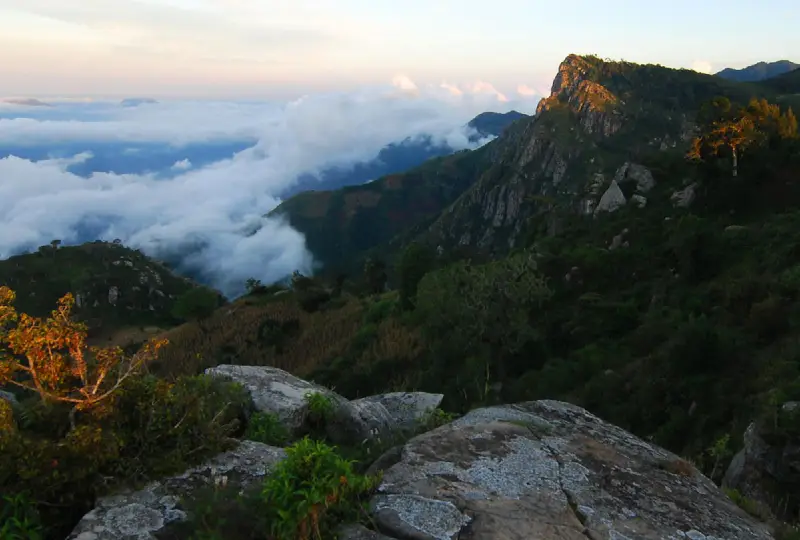Pare Mountains Overview
The Pare Mountains, located in northeastern Tanzania within the Kilimanjaro and Manyara regions, are part of the Eastern Arc Mountains and are renowned for their scenic landscapes, rich biodiversity, and cultural heritage. Divided into the North Pare and South Pare ranges, these mountains rise sharply from the surrounding lowlands, creating steep valleys, terraced hillsides, and panoramic viewpoints. The Pare Mountains are celebrated not only for their natural beauty but also for the strong cultural presence of the Pare people, who have lived in the area for centuries, maintaining sustainable agricultural practices and unique cultural traditions. This blend of ecological and cultural richness makes the Pare Mountains an attractive destination for hikers, eco-tourists, researchers, and travelers seeking authentic highland experiences in Tanzania.
Ecologically, the Pare Mountains are a hotspot of biodiversity, supporting tropical montane forests, bushlands, and grasslands. These habitats are home to a variety of endemic plant species, colorful birds, small mammals, and unique amphibians. Streams and waterfalls cascade through the mountains, feeding into fertile valleys that sustain local communities. The terraced landscapes not only provide breathtaking scenery but also demonstrate centuries of sustainable land management by the Pare people. Birdwatchers, botanists, and nature enthusiasts are particularly drawn to the area due to its combination of endemic flora, forested slopes, and scenic highland vistas.
Visitors to the Pare Mountains can engage in a range of activities including hiking, trekking, birdwatching, nature photography, and cultural interactions with local communities. Trails vary from short walks to multi-day treks that pass through forests, villages, and scenic ridges. Travelers have the opportunity to experience traditional farming practices, taste local cuisine, and participate in community-led eco-tourism initiatives. The mountains offer a unique combination of adventure, relaxation, and educational experiences, making them a compelling destination for eco-conscious travelers and those seeking a less-touristed alternative to Tanzania’s more famous mountain ranges.
Where are the Pare Mountains located?
The Pare Mountains are located in northeastern Tanzania, within the Kilimanjaro and Manyara regions. They are divided into the North Pare and South Pare ranges and are part of the Eastern Arc Mountains, which are recognized for their high biodiversity and ecological significance. The mountains are accessible by road from Moshi, Tanga, or other nearby towns.
What makes the Pare Mountains unique?
The Pare Mountains are unique for their combination of steep, terraced landscapes, rich biodiversity, and strong cultural heritage. Unlike other Eastern Arc mountains, the Pare region is known for the traditional lifestyles of the Pare people, sustainable agriculture, and a harmonious relationship between humans and nature. The combination of scenic ridges, waterfalls, endemic species, and cultural immersion makes it a one-of-a-kind highland destination.
What wildlife can be observed in the Pare Mountains?
The Pare Mountains host endemic plant species, forest birds, and small mammals. Birdwatchers can spot species such as sunbirds, forest warblers, and raptors, while botanists may be interested in unique orchids, ferns, and flowering plants. Streams and forest patches support amphibians and reptiles, adding to the ecological diversity. Guided hikes provide the best opportunity to spot wildlife and appreciate the mountains’ unique ecosystems.
When is the best time to visit the Pare Mountains?
The dry season, from June to October, is ideal for trekking and hiking, as trails are easier to navigate and wildlife is more visible. The wet season, from November to May, brings lush greenery, flowing streams, and vibrant bird activity, though some trails may be muddy or challenging. Both seasons offer unique opportunities for photography, nature observation, and cultural engagement.
How can travelers access the Pare Mountains?
Travelers can reach the Pare Mountains by road from Moshi, Tanga, or nearby towns. Private vehicles, taxis, or guided tours are recommended for navigating the region. Lush villages and mountain trails provide convenient bases for hiking and eco-tourism activities, and local guides enhance both safety and the quality of the experience.
What activities are available in the Pare Mountains?
Popular activities include hiking and trekking through forested slopes and terraced valleys, birdwatching, photography, and exploring waterfalls. Cultural activities include visiting Pare villages, learning about traditional farming methods, and participating in community-led eco-tourism initiatives. Multi-day treks allow deeper exploration of both ecological and cultural features of the mountains.
Where can travelers stay near the Pare Mountains?
Accommodation options include guesthouses, small eco-lodges, and homestays in nearby towns and villages. Staying locally allows visitors to experience morning wildlife activity, interact with communities, and access trekking trails conveniently. Many lodges offer guided hikes and cultural experiences, providing a full highland immersion.
How do the Pare Mountains compare to other Tanzanian mountain ranges?
Compared to Kilimanjaro or the Usambara Mountains, the Pare Mountains are less commercialized and less frequented by tourists, offering a more intimate and authentic highland experience. Their combination of steep terraced slopes, endemic species, waterfalls, and rich cultural heritage makes them unique among Tanzania’s Eastern Arc mountains.
Is it safe to visit the Pare Mountains?
Yes, the Pare Mountains are safe when standard precautions are followed. Hiking with a local guide, wearing suitable footwear, carrying water, and respecting local communities and wildlife ensures a secure and enjoyable experience. Trails are generally well-marked, and guided tours provide both safety and cultural insight.

